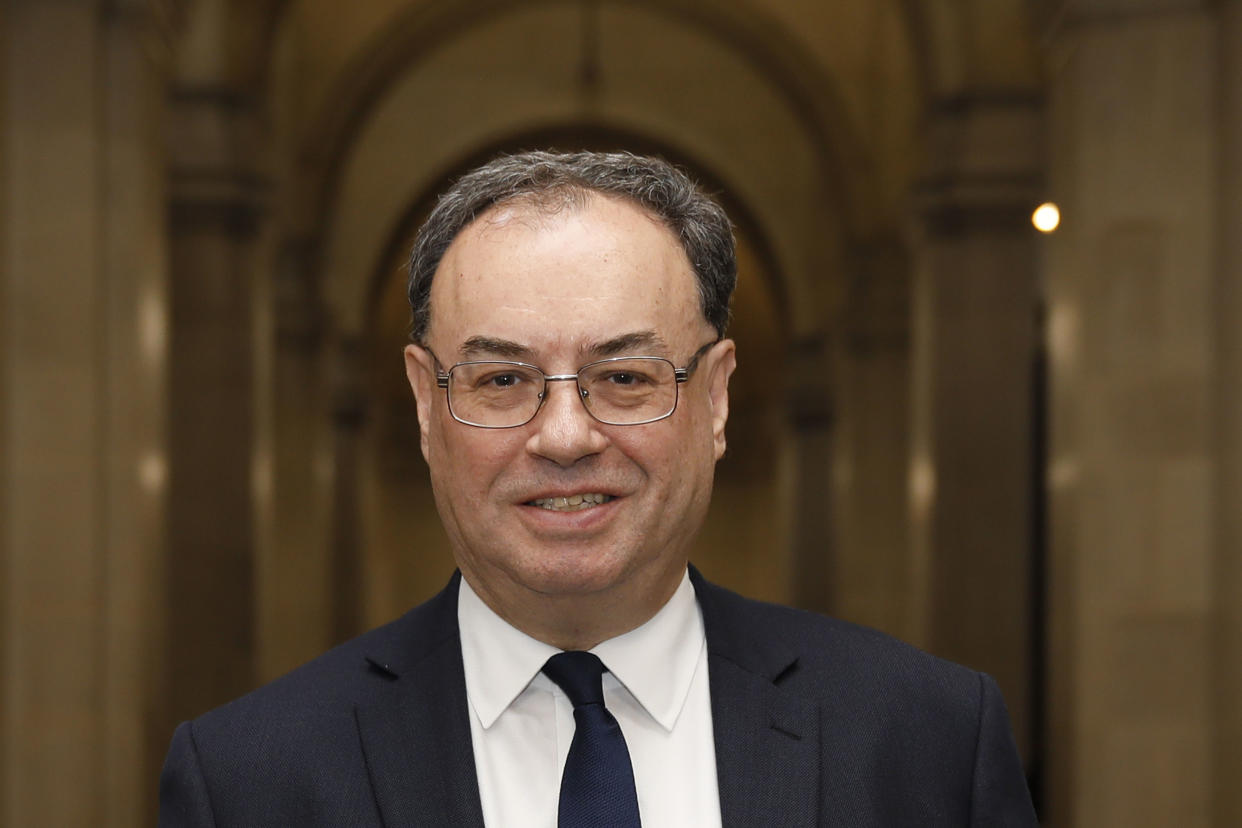Bank of England governor hints at negative interest rates

Bank of England governor Andrew Bailey on Wednesday refused to rule out taking UK interest rates into negative territory, comments that are likely to revive speculation about a possible rate cut.
Bailey said negative interest rates remained in the central bank’s “box of tools” should they be needed.
“It’s in the box of tools,” Bailey told MPs. “We’re not planning it at the moment, we’ve got no plans to use it imminently but it is in the box.”
The governor was asked about the possibility of rates dropping below zero during an appearance before MPs on the Treasury Select Committee.
“If it was the right thing to do… then the case for bringing it out of the box would be strong,” Bailey told MPs.
READ MORE: 'Record level' of uncertainty for UK economy, warns Bank of England governor
The comments follow speculation earlier in the year that the Bank of England was poised to take the UK into negative interest rate territory for the first time in history.
The Bank of England cut the UK’s interest rate to a record low of just 0.1% in March, hoping to stave off the worst economic effects of the COVID-19 crisis. The cut meant policymakers had to drop rates to zero or push into negative territory in order to stimulate inflation further.
Speculation around negative rates mounted over summer, following comments from policy makers and dire economic data. The central bank wrote to lenders in July saying the policy was under “active review.” The bank ultimately decided to hold rates at 0.1%.
READ MORE: Bank of England: UK economy to have biggest annual decline in 100 years
Markets are still pricing in negative interest rates in the UK within the next 12 months, with rates only expected to rise to 0.2% by 2025.
Bailey said deflationary pressures had eased since the Bank of England’s last Monetary Policy Report in August.
“Since the August report, I would say the most likely short-run path of inflation is higher than we had it in the report,” Bailey told MPs.
“It probably won’t go negative now is our best guess. We thought it would briefly go negative through a combination of VAT and also the way in which the Eat Out to Help Out scheme is accounted for in inflation.”
READ MORE: Fears of Bank of England directly financing UK spending are ‘misplaced’
Bailey said a temporary VAT cut for hospitality and leisure businesses was not translating into lower prices for consumers. Businesses are instead using the headroom to absorb rising costs linked to COVID-19 costs such as PPE.
Negative interest rates theoretically encourage banks to lend more by punishing them for keeping cash at central banks. Spurring lending should, in turn, boost spending and help drive inflation towards the Bank of England’s 2% target.
Interest rates have fallen below zero in much of Europe over the last decade and some leading economists have called for widespread adoption of negative rates in response to the COVID-19 crisis. Former IMF chief economist Kenneth Rogoff wrote in May: “Only a policy of effective deep negative interest rates, backed up by measures to prevent cash hoarding by financial firms, can do the job.”
There is debate about negative rates among economists. Many market participant also believe the negative effects of the policy outweigh positives.

 Yahoo Movies
Yahoo Movies 
